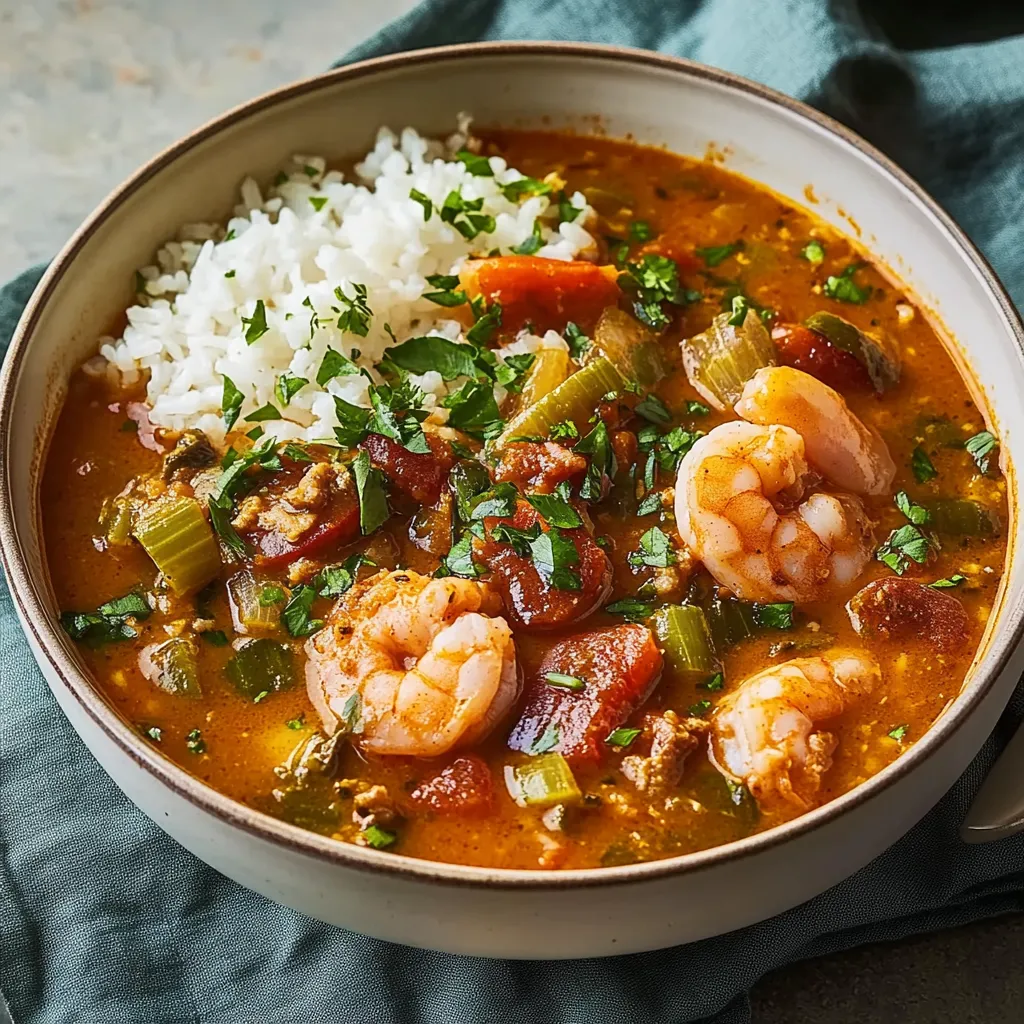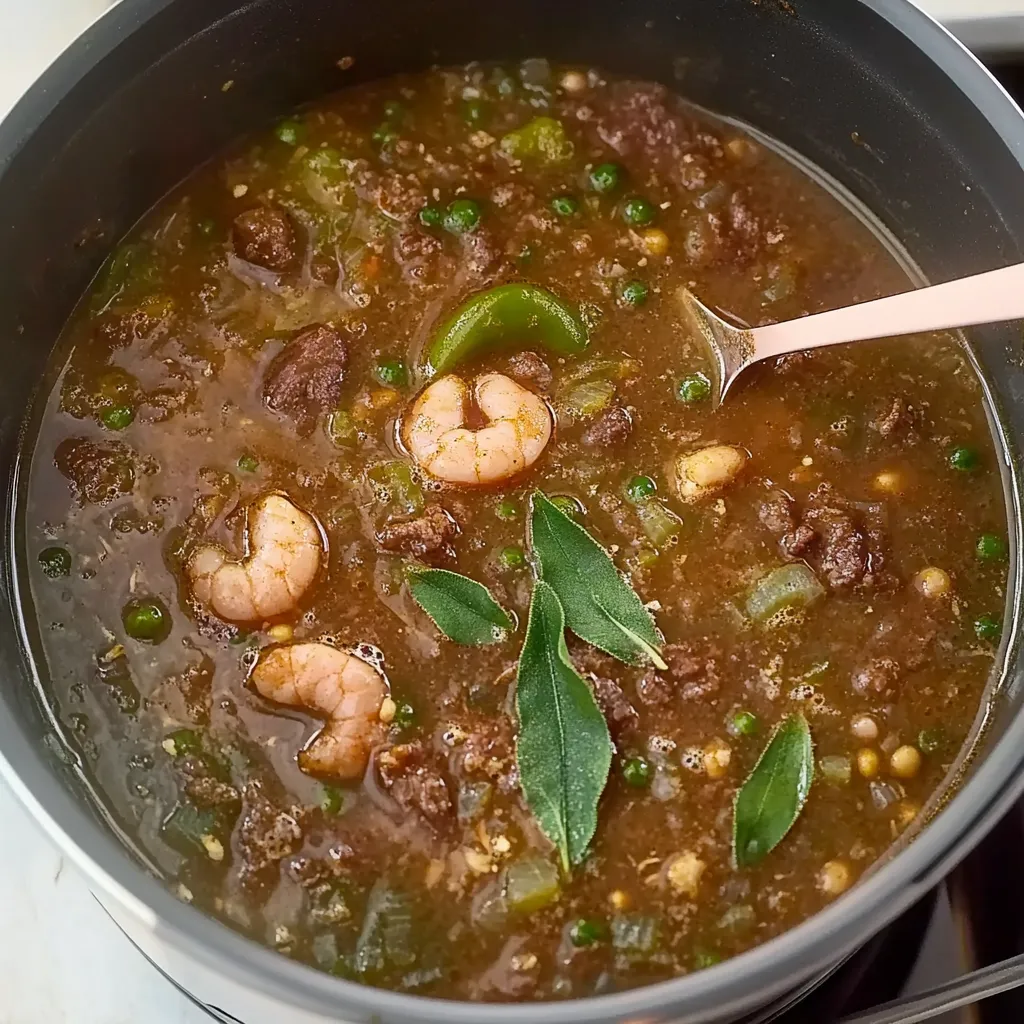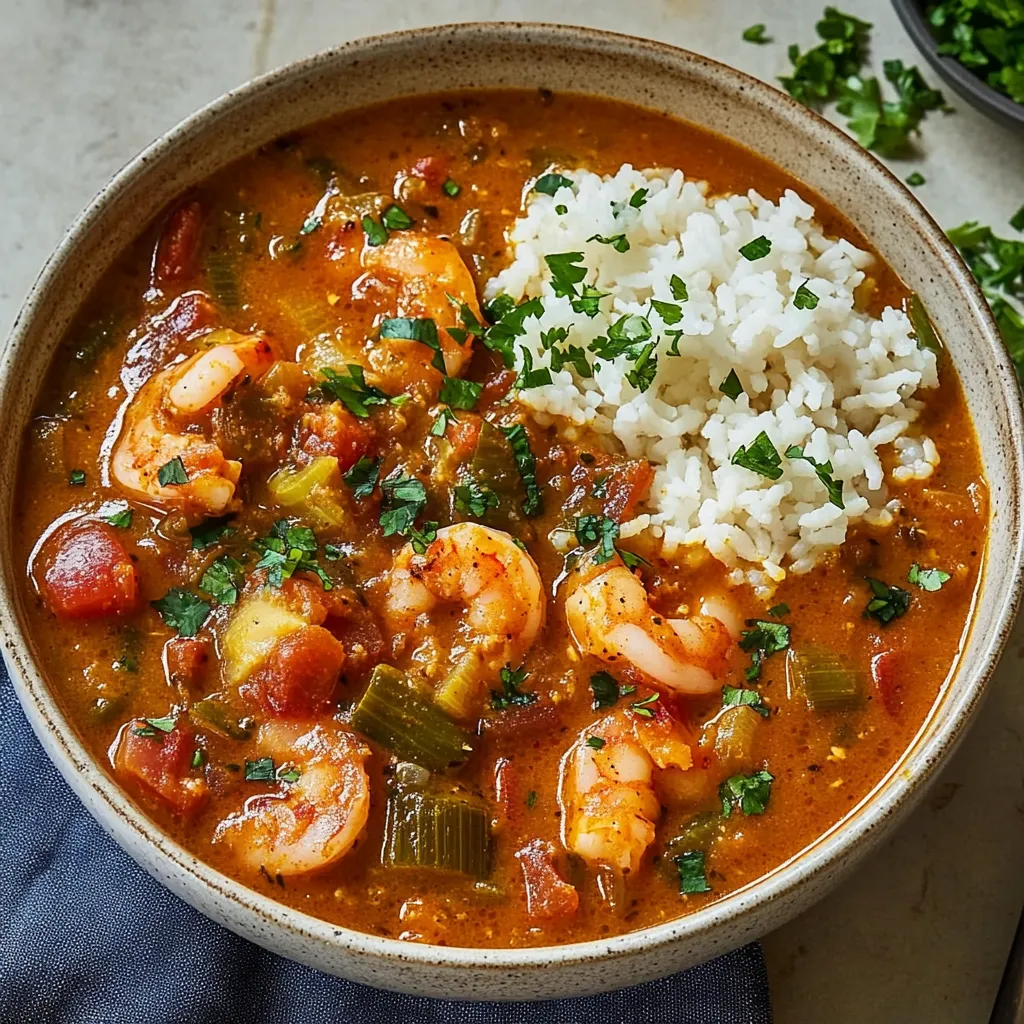 Pin it
Pin it
A true New Orleans gumbo is more than just a recipe - it's a story that unfolds in layers of flavor, each one telling tales of family traditions and Louisiana heritage. This Creole gumbo, passed down through generations and perfected over countless Sunday dinners, starts with a perfectly dark roux that provides the foundation for every other element. The rich mahogany color of the roux, the tender trinity of vegetables, and the marriage of seafood and sausage create a dish that's both sophisticated and soulful.
My journey with this gumbo started in my grandmother's kitchen, where she taught me that patience with the roux is the key to everything. Now, years later, I still hear her voice reminding me to 'keep stirring, baby' as I stand over my own pot.
Essential Ingredients Selection
- Flour and Bacon Drippings: The foundation of your roux must be precise - use white, all-purpose flour and clear, strained bacon drippings. The drippings should be from good quality bacon without any bits remaining
- Andouille Sausage: Choose authentic andouille when possible - it should be firm, smoky, and have a natural casing. The sausage provides a crucial flavor base that infuses the entire dish
- Trinity Vegetables: Your celery, onion, and bell pepper should be fresh and firm. The bell pepper should have thick walls and the celery should snap crisply when bent
Detailed Cooking Instructions
- The Sacred Roux:
- Heat heavy-bottomed pot over medium-low heat. Add bacon drippings and let warm completely. Sprinkle flour gradually while whisking. Whisk continuously in figure-eight motion. Watch color progress from blonde to peanut butter. Continue to mahogany brown (25-30 minutes). Never stop whisking or roux will burn. Remove from heat when color is reached.
- Building the Trinity Base:
- Process vegetables to uniform, small pieces. Don't overprocess - you want tiny pieces, not paste. Add trinity to hot roux gradually. Stir constantly to prevent sticking. Watch for vegetables to soften. Let natural sugars release and develop. Add garlic in final few minutes. Cook until onions are translucent. Season with small pinch of salt.
- Developing the Gumbo Base:
- Combine water and bouillon in separate pot. Bring to gentle boil. Add roux mixture one spoonful at a time. Whisk thoroughly between each addition. Maintain gentle simmer. Add seasonings gradually. Let bay leaves and thyme infuse slowly. Adjust heat and seasoning to taste. Simmer for full hour, stirring occasionally.
- The Okra Treatment:
- Heat bacon drippings until shimmering. Add okra in single layer if possible. Don't crowd the pan. Add vinegar immediately. Cook until slime disappears. Stir occasionally until edges brown. Transfer to gumbo with slotted spoon. This step ensures no sliminess in final dish.
 Pin it
Pin it
Growing up, my grandmother taught me that gumbo-making is a meditation - you can't rush it or leave it unattended. The way she handled each ingredient with reverence showed me that cooking isn't just about following steps, it's about showing love through food.
Understanding Seafood Timing
Adding seafood too early can make it tough and rubbery. I've learned to add crabmeat first, then shrimp in the final minutes, ensuring each element maintains its perfect texture.
 Pin it
Pin it
This gumbo has become more than just a recipe in my family - it's a tradition that brings everyone together. The way the aroma fills the house, drawing people to the kitchen to peek into the pot and steal tastes, creates moments that are as precious as the dish itself. When I make it now, I feel connected to all the generations of New Orleans cooks who've stirred their pots with the same love and attention.
Frequently Asked Questions
- → What's the secret to making a good roux?
- Patience is key - cook the flour and bacon drippings over medium-low heat, whisking constantly for 20-30 minutes until it reaches a rich mahogany brown color. Never stop whisking, or it will burn.
- → Can I skip the filé powder?
- While filé powder adds authentic flavor and thickening, you can omit it. The okra will still provide thickness to your gumbo, though the flavor will be slightly different.
- → How long can I store leftover gumbo?
- Gumbo keeps well in the refrigerator for 3-4 days and can be frozen for up to 6 months. Many people say it tastes even better the next day!
- → Can I use different seafood?
- Yes, you can adapt the seafood based on what's available. Oysters, crawfish, or firm white fish can be used in place of or in addition to the shrimp and crab.
- → Why add the filé powder in two stages?
- Adding filé powder in two stages helps develop the flavor during cooking while also ensuring proper thickening at the end. Never boil the gumbo after adding the final portion of filé powder.
